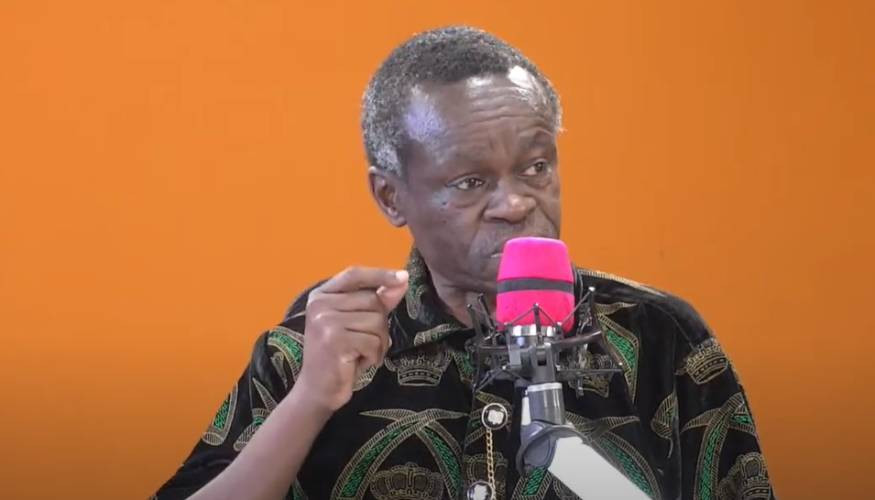NAIROBI: Willis, the guy of ‘Mind Your Language’ on KTN, is different. The way he speaks, how he gestures and chuckles. Even the way he dresses. And this word master does it the same way week in week out. For sure, in a crowd, the wordsmith would stand out when it comes to style. And he isn’t all alone. Prof PLO Lumumba would say, for instance: “Come on, in the business of sending and receiving messages, language is the in-thing. Senders ‘ride’ on language to reach their destinations (recipients). Communicators therefore have to employ the power of language if they dream of going places. So I need this particular vocabulary – not that tired one – to drive my point home.”
However, Prof Okoth Okombo would have a contrasting view: “Oh yes, simplicity is the main thing. Provided I’m not too simplistic, I’ve to be simple. You see, I don’t intend to express to impress. If I do that, I’ll mask the meaning – yet message is everything. So I’ll choose this familiar word – and not that elitist or bookish one”. Now, the two professors are also stylists. Style is considered an attractive feature that forces or tricks people to be attracted to a person or thing.
In the written or spoken word, when there’s clarity, conciseness and consistency, that’s style. According to the Longman Dictionary of Contemporary English, the word ‘style’ means “a way of using words or spelling that is considered correct”. Style therefore isn’t only about a person’s unusual way of writing or speaking, but also the correct use of language. It’s the way well selected words combine in an artistic manner to form phrases, clauses and finally sentences.
Even how a writer punctuates sentences is imperative, because decisions on which punctuation mark to use and where to place it can make all the difference. Accordingly, the five-lettered word isn’t just about simplicity and sophistication or flashy writing and speaking; it’s essentially, active sentences, clean writing and speaking. It’s about, among other things, the use of strong verbs and grammatically sound sentences. Stylistics lecturer Prof Henry Indangasi observes: “Good style is speaking or writing simply and clearly, but Mr Philip Ochieng’s pompous method of writing is a good example of how not to write.”
If consistency is a component of style, how consistent then are the two oldest newspapers in Kenya? Largely, these dailies tend to lean towards the British dialect. But apparently they struggle to be consistent in the use of this form of a language, because the American dialect is quite dominant, given that it’s the main language in the UN, World Bank, Hollywood and its movies, music world, wire (agency) stories, and publications, not forgetting the ubiquitous Internet.
So it’s an uphill struggle for the papers to avoid Americanism, with its grammar and vocabularies such as editorial, theater, gas, attorney, elevator, and color. To underscore this point, recently the BBC World Service reported: “South African students are throwing ‘rocks’ at the police ...”. Usually, whereas an angry British throws ‘stones’, an irritated American hurls ‘rocks’; a dead British is taken to a ‘mortuary’, but a lifeless American is dispatched to a ‘morgue’. When a Briton congratulates a person ‘on’ the work well done, an American will congratulate you ‘for’ passing your exams with flying ‘colors’. From the foregoing therefore, one could appreciate the difficulties local journalists face in their attempt to achieve consistency and hence good style.
 The Standard Group Plc is a
multi-media organization with investments in media platforms spanning newspaper
print operations, television, radio broadcasting, digital and online services. The
Standard Group is recognized as a leading multi-media house in Kenya with a key
influence in matters of national and international interest.
The Standard Group Plc is a
multi-media organization with investments in media platforms spanning newspaper
print operations, television, radio broadcasting, digital and online services. The
Standard Group is recognized as a leading multi-media house in Kenya with a key
influence in matters of national and international interest.
 The Standard Group Plc is a
multi-media organization with investments in media platforms spanning newspaper
print operations, television, radio broadcasting, digital and online services. The
Standard Group is recognized as a leading multi-media house in Kenya with a key
influence in matters of national and international interest.
The Standard Group Plc is a
multi-media organization with investments in media platforms spanning newspaper
print operations, television, radio broadcasting, digital and online services. The
Standard Group is recognized as a leading multi-media house in Kenya with a key
influence in matters of national and international interest.







